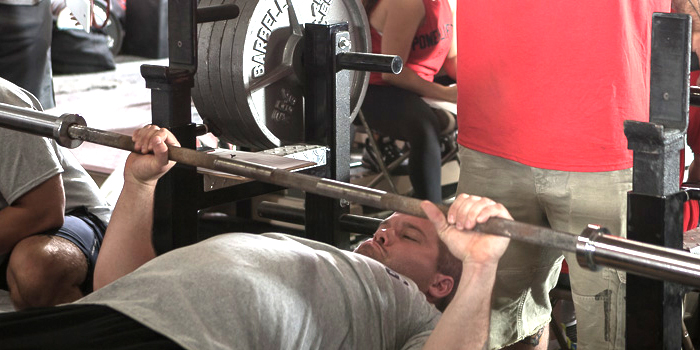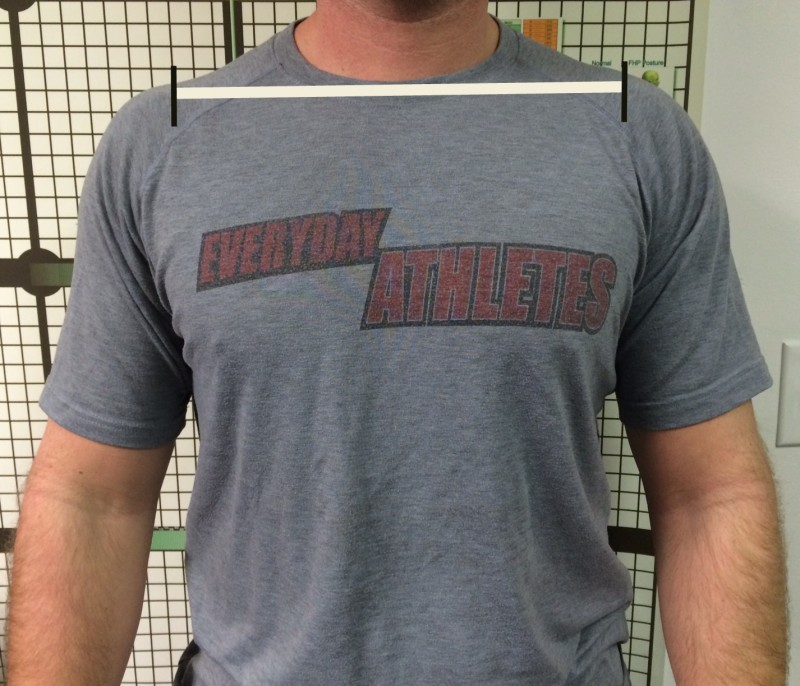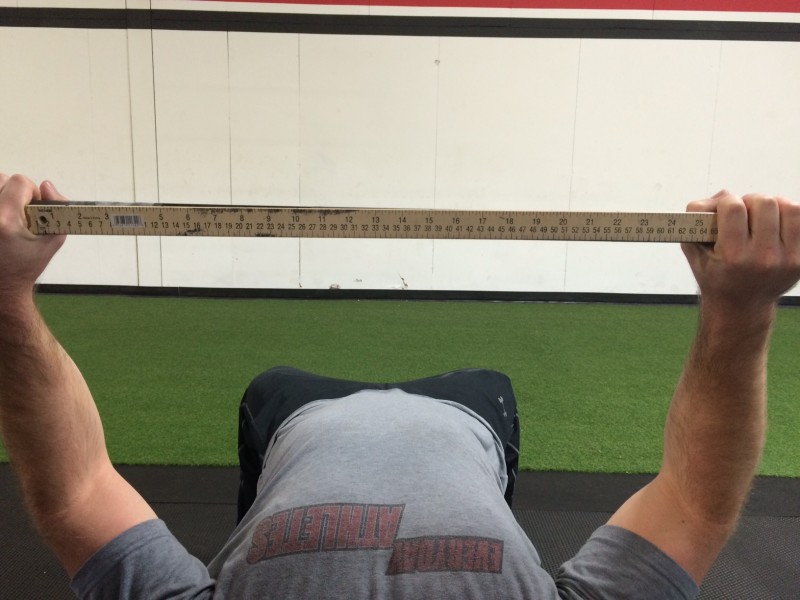
There are fewer exercises in the realm of fitness that are more synonymous with strength than the bench press. One of the most popular exercises of all time comes with much debate and discussion on perfect technique and style. Elbows in, elbows out, shoulders down, shoulders up; but there are a few universal truths that all athletes agree on. All athletes, be it bodybuilder or powerlifter, agree that performance is paramount. The quickest way to decrease performance and limit gains is a shoulder injury. In the world of powerlifting, cross cueing of geared lifters to raw happens all too frequently. Gear, in my opinion, is an entirely different sport and the technique for the press changes with it. Common examples of geared press movements that raw lifters are ill-advised and adapted include tucking the chin when lowering the bar as well as an ultra wide grip with severe elbow tuck. New lifters see the techniques of some of our strongest and attempt to emulate but without gear yielding unproductive consequences. Converting geared techniques to raw lifting is a recipe for years of decreased progress and possible injury. Optimizing your grip for a raw press can not only lead to a greater press but one that keeps you on the bench pad and off the therapy table pad.
Education through Iron
Spending time under the bar has taught me more than I would ever like to know about how grip and elbow position can work over a shoulder joint. Lifting in your parents’ basement is a rite of passage I know many have had the privilege to own. Having no idea what I was doing and purely with the intention of getting jacked, grabbing the bar and pressing away led to some early shoulder issues. Fast forward a few years and investing the time to educate myself on the topic of proper bench technique, I was finally able to bench pain free (I really didn’t get most of my kinks worked out until I went to an elitefts seminar, though). Finding the proper hand position on my bench was paramount for my progress. If you setup too wide while raw, it will result in a loss of power. The opposite while setting up with too narrow a grip will develop some killer triceps but limit full muscle recruitment. The golden answer you have been waiting for is 1.5 times biacromial width [1]. Let me break that down for you.
Finding Your Biacromial Distance
No need to over think this one, simply measure the distance from the outside edge of both acromial processes. This distance is then taken and multiplied by 1.5. This will give you the distance you need to place your hands on the bar. Grip width is taken from the inside edge of your index finger on both sides.
For instance in my case: (17in. x 1.5 = 25.5in.)
Numbers Don’t Lie
Hand position on the bench press directly correlates with external rotation of the shoulder. There are certain positions that cause excessive stress on your glenohumeral joint. When your arm is externally rotated and abducted 90° from your body, this is defined as the “at risk” position for shoulder injury. This is the exact position of pressing that graced my younger self with a nice shoulder injury. When gripping the bar with a distance of two times biacromial width or greater, the shoulder is forced to be abducted above 75°. At 1.5 or less, shoulders are placed at the ideal 45° of abduction. It has been shown that when arms are abducted 45° from the body, it will produce the greatest amount of force into the bar via EMG analysis [2]. Many geared lifters adopt the ultra wide two times biacromial distance or more grip to shorten the bar path and to work the shirt more. This is not something a raw lifter should ever do for performance. The shirt helps protect the lifters shoulder where a raw lifter is left with nothing but tendons and ligaments. The geared lift is different style of pressing and is not suitable for a raw lift. Raw lifters attempting to mimic this style even with a sever elbow tuck are approaching the “at risk” position and halted progress.
Wide Grip Means Wide Chest?
Injury risk and performance are not always held hand in hand. Pushing the envelope in the quest for gains isn’t out of the question. The argument can be raised that a wider grip works to activate more pectoral muscles without decreasing tricep lockout strength. Unless you are in a shirt, this is not the case. Research has demonstrated in a one repetition max bench press test that there is no difference in the pectoralis muscle recruitment with a wide bench press grip [1, 3]. Additionally, there is a large difference in the amount of tricep activation with the normal 1.5 biacromial distance grip [1]. Science talks, the results of the EMG settle the case that taking a wide grip is not only an injury risk but a performance reducer. Raw lifting all too often looks up to the strongest of the geared trying to find that magic technique that will help add pounds on the bar. But, they are two different lifts and need to be treated as such. Stealing geared hand and arm position methods sets the stage for situations of decreased performance and possible injury.
Final Recommendations
The potential for injury is far too high on the bench press. Grabbing the bar and pressing away in a bad position is killing your joints and your gains. The smallest changes can have grand effects in sport. Lift your head when swinging a golf club and you whiff, another missed ball. Shoot a basketball with a flat palm and no back spin, another missed basket. Grab the bar too wide; produce no force and another shoulder injury.
Skip mimicking shirted movements and master your raw press. Find your biacromial distance and find your appropriate grip distance. Now lower the bar with your forearms perpendicular to the floor and arm abducted 45° from your body. Maintain your upper back tightness and press the bar back up. Press safely, maintain tightness, and use your grip, not someone else’s, and live a lifetime on the pad instead of the therapy table.
Works Cited
1. Green, C.M. and P. Comfort, The Affect of Grip Width on Bench Press Performance and Risk of Injury. Strength & Conditioning Journal, 2007. 29(5): p. 10-14.
2. Clemons, J.M. and C. Aaron, Effect of Grip Width on the Myoelectric Activity of the Prime Movers in the Bench Press. The Journal of Strength & Conditioning Research, 1997. 11(2): p. 82-87.
3. LEHMAN, G.J., THE INFLUENCE OF GRIP WIDTH AND FOREARM PRONATION/SUPINATION ON UPPER-BODY MYOELECTRIC ACTIVITY DURING THE FLAT BENCH PRESS. The Journal of Strength & Conditioning Research, 2005. 19(3): p. 587-591.











Further, when you say:
"At 1.5 or less, shoulders are placed at the ideal 45° of abduction."
I'm going to have to again disagree for reasons of geometry. If a grip width of 1.5 * biacromial distance puts me at 45 deg then I'm fairly certain that a width of less than that will also reduce the angle.
Personally I think it would have been best if the measurements were left out and we were just told to have our arms at 45 deg.
This is the second article in as many months (though on different sites) that have been touting the 1.5 * acromial process distance as being "optimal". If you are one of the less than .1% of the population who has a completely symmetrical build then yes. But that just does not apply to the majority of us.
From my observations and from personal experience, to add on to what Stranger mentioned I find that it is not so much the length of the humerus but that of the Radius and Ulna.
I for example have very long forearms. If I try to bench with this "optimal" hand placement, touching the bar to my chest becomes a chore due to amount of shoulder retraction. When you hit that point of no return, not only will the bar not move, that's when strains (or tears) occur.
For those built like me, a wider grip is a must. [yes, I have practiced and refined my setup to pull together my shoulder blades, get back on my traps, chest/sternum high etc.. so my challenges I don't consider technical at this point - I am simply at a mechanical disadvantage and thus need to maximize my non-ideal leverages the best I can]